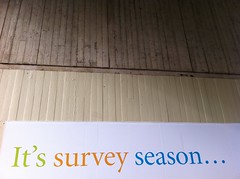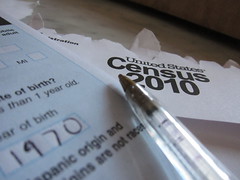The roundtable “Polling, Politics, and the Populace” is a great overview of the insights sociologists can provide to polling. While there are several aspects you could discuss the classroom, one of the key points highlights the difficulty of asking questions. To illustrate this, students could create a few survey questions in class after reading the roundtable.
Have the entire class brainstorm a topic and audience for a fictitious survey. Then, have students break into groups. Each group should develop three questions about the topic. After 10 minutes, ask each group to write their questions on the board. Then, discuss the questions as a class. Are they closed or open-ended (you could also specify this in the directions so all are closed-ended), and why might this matter? What do they measure? How are they different? Are there ambiguous words, jargon, or other confusing aspects? Would there be difficulties with in-person polling? Etc.


